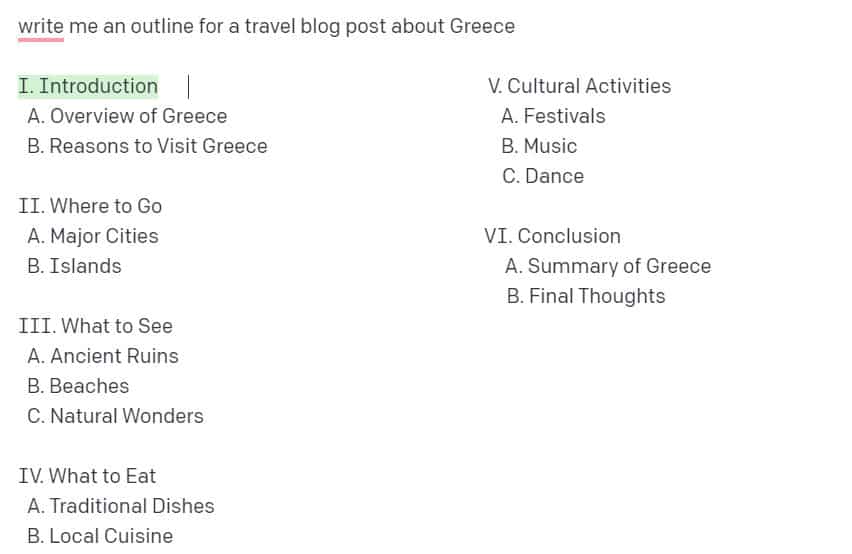5 Tips On How To Lean Into AI For Content Creation
By Tawny Bertolozzi and Dalene Heck
The use of artificial intelligence for content creation is arguably the biggest revelation in the digital marketing landscape in a very long time (maybe ever?). While being a revelation, it is also divisive, with some swearing it off entirely and others jumping headfirst into testing the benefits. But the numbers are definitely showing a trend: Marketer’s use of AI soared between 2018 and 2020, jumping from 29% in 2018 to 84% in 2020. All signs point to AI integration becoming even more prevalent going forward. Where do we fall at HMI? Somewhere in the middle.
In its current form, using AI for content creation has major limitations. Missteps out of the gate have hampered Google’s AI tool (and stock price), and in recent weeks there have been plenty of reasons to believe that “Bing’s AI has lost its mind.” Everyone and their dog have been running their own tests of these new tools, but it was one of our CEO’s favourite musicians – Colin Melloy of The Decemberists – who may have said it best: “That’s one thing an AI can’t have, intuition. It has data, it has information, but it has no intuition. One thing I learned from this exercise: so much of songwriting, of writing, of creating, comes down to the creator’s intuition, the subtle changes that aren’t written as a rule anywhere — you just know it to be right, to be true. That’s one thing an AI can’t glean from the internet.”
Yet still, to everyone’s benefit, AI can be a helpful tool when utilized in tandem with an actual human component, something otherwise dubbed as the “content cyborg”. At its very basic use, the assistance of AI can help to cut down on time brainstorming for content creation and getting a general framework to work from. From there, balancing the full breadth of AI capabilities with the humanness of storytelling is how we can all adapt and not be left behind in this new digital realm.
But where to even start? Whether you are an individual content creator or involved in big brand marketing, below are five tips to help you gingerly lean into utilizing AI for content creation.
Start Small
Just because there’s a new tool in town doesn’t mean that you have to jump in head first! We recommend starting small and utilizing AI in ways that fit your needs and workflow. You don’t need to immediately start publishing all AI content (actually, we highly advise against that), but finding ways to make it work for you is the sweet spot.
Even something as small as generating a meta description for a new blog post is an easy way to use AI without leading to overwhelm (and probably leading to a boost in clicks and rankings). Creating headlines and outlines for blog posts, and generating new social media bios are other great ways to dip your toes into the AI pool.

Incorporate Into Workflow
In the old days of pen and paper, writers would typically sit down with their thoughts and map out ideas, an outline, and even to-do lists. Nowadays, our current workflows use Google Suite, iCal, and a whole plethora of digital tools to optimize our working hours. Inserting AI and applicable software into an existing workflow to automate repetitive tasks allows you to be freed up to tackle other components. It does not diminish you; it accentuates and gives space for you to be free to do other productive pieces within your workflow, ultimately leading to increased productivity.
Give artificial intelligence and marketing automation tools the opportunity to automate manual tasks such as checking for broken internal links, article curation and brainstorming, as well as social media post creation and scheduling for optimized times, even creating unique images and art just from a description! Everything that is a pain point for you in your workflow can be helped by AI.

Think Outside The Box
Most content writers are using AI to help source ideas and generate target keywords that they would never have thought of before (or at least it would have taken a bit longer to get there). Adding in AI as an assistant to your human brain, it is available to use as a jumping-off point in your content, helping with marketing research (think: “what are the largest travel brands in Europe”), or even cold email pitches to prospective brands and destinations. Get the creative juices flowing by inputting some thoughts into a software and see what pops up!
As you can see from the example, it’s not 100% perfect, but it at least gives you a starting point to edit from. Another out of the box way of using ChatGPT in marketing content is by helping to make your content more accessible. An example of this is giving the program a sentence to translate into American Sign Language (ASL). Although there are not visuals (yet, we’re sure it’s coming), it can describe the sentence with ASL movements and give the actions in simple terms for a regular person with no prior knowledge to understand easily.
Faster Processing
The age-old adage of to err is human is 100% correct. We are not robots, and errors do happen. We can also get overwhelmed by too much data and our brains need breaks to properly process everything we read in a day. Understanding data is something that computers will just always do better than humans. And that’s okay! That’s why some smart humans create robots and programs that can do some of these things for us.
AI can help you make sense of your data and gain insights that you can use to improve your content marketing strategy among other useful things. For example, BuzzSumo’s discovery tool can help collect and analyze high performance content in your niche, and Mention has powerful social listening capabilities to track all social media mentions based on your directions. AI is also proficient at data analysis, like summarizing survey data, trawling the web for top trends in a specific industry, summarizing podcast show notes and transcripts, and more.
Keep the “Humanness”
There have been some hilarious responses from AI, some detrimental, and others that have been completely unhinged! But the tide is still flowing to an AI-embracing digital landscape. What will make your content stand out from the crowd is your story. Your viewpoint, intuition, really everything that makes you and your business *who you are*. The way out of this current transitory time is through, and it helps that you’ll also have the time-saving perks of a robot mind in your corner.
How does this work? Well, say you are writing needing to write a new article for your brand website. You can use AI software to come up with the outline and framework and then add in anecdotes and tweak the voice to sound more like your brand. It can be used as an accelerant for first-draft content writing. Be sure to re-read closely for fact-checking and grammatical issues but the biggest piece that needs adding in is the HUMAN quirks. Search engines are very aware of AI-written content, and Google has said that they care if the content is created BY people, as long as it’s created FOR people. Use the first draft as a starting point to then add your own consistency and brand tone, but above all else, please make sure all the information is correct.
Optimize for SEO
AI is basically a giant computer brain, so it has a leg up on us for thinking like a computer. A smart move would be to integrate AI into repetitive and grueling tasks that require an analytical mind (i.e. writing to optimize content for search or even things such as capturing UGC from social media). AI capabilities are intrinsically set up to be optimized for search rankings and keyword searches so AI can quickly analyze a blog post and suggest changes to improve the post’s ranking in search engine results pages. Using AI for keyword opportunity discovery can be quite powerful as it quickly identifies keywords that you should be using and even suggests link building opportunities. There are a lot of options when it comes to SEO automation tools and even some that allow you to monitor competitor blog backlinks for research and strategy purposes.
 Conclusion
Conclusion
It may be divisive, but the truth is AI is not going anywhere. We are at a point in time that is similar to how Yellow Pages looked at search engines like Google and Yahoo. It’s the beginning of something big, and if we don’t learn to flow with it, we’re going to be left behind – just like the Yellow Pages! Humans are incredibly adaptive and the mix of human skills with technology has been supremely beneficial in the past.
While the jump between 2018 and 2020 for AI was significant, it is being reported that marketing teams are averaging seven different uses of AI currently and 52% are planning to increase their adoption this year. Don’t get left in the dust, but don’t lose your brand integrity either. Incorporating AI into your content creation and marketing strategies will increase productivity. At the end of the day, you can just give it a shot and see what happens. What’s the worst that could happen? Well…maybe don’t ask Google that question. (That was pretty bad.)
Content Writing Software:
- Writesonic – Free version up to full unlimited price plans
- OpenAI – Starts with $18 free credit, then pay as you go with a token-based system
- Jasper – Paid plans starting at $49/month
- Rytr – Free to unlimited plans
- INK – Paid plans starting at $39/month but free 5-day trial available with 10,000 words
- Copy.ai – Free to unlimited plans
*More information on the above options as well as a comparison between other options can be seen in this article.
You may also want to read:
FREE Resource: Storytelling With Social Media
8 Reasons To Work With Influencers
How To Get Started With Email Marketing In The Tourism Industry






 Conclusion
Conclusion